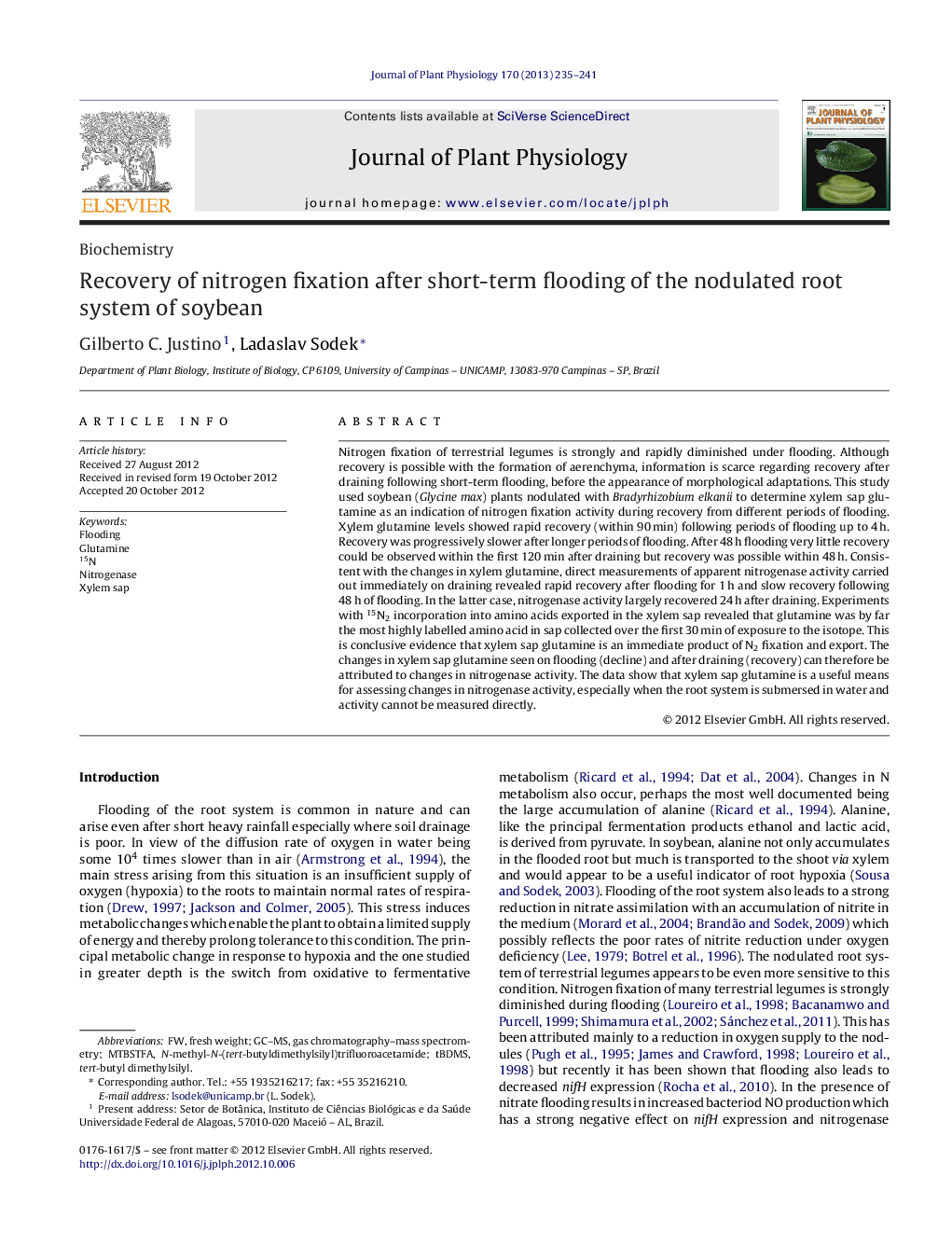| Article ID | Journal | Published Year | Pages | File Type |
|---|---|---|---|---|
| 2056162 | Journal of Plant Physiology | 2013 | 7 Pages |
Nitrogen fixation of terrestrial legumes is strongly and rapidly diminished under flooding. Although recovery is possible with the formation of aerenchyma, information is scarce regarding recovery after draining following short-term flooding, before the appearance of morphological adaptations. This study used soybean (Glycine max) plants nodulated with Bradyrhizobium elkanii to determine xylem sap glutamine as an indication of nitrogen fixation activity during recovery from different periods of flooding. Xylem glutamine levels showed rapid recovery (within 90 min) following periods of flooding up to 4 h. Recovery was progressively slower after longer periods of flooding. After 48 h flooding very little recovery could be observed within the first 120 min after draining but recovery was possible within 48 h. Consistent with the changes in xylem glutamine, direct measurements of apparent nitrogenase activity carried out immediately on draining revealed rapid recovery after flooding for 1 h and slow recovery following 48 h of flooding. In the latter case, nitrogenase activity largely recovered 24 h after draining. Experiments with 15N2 incorporation into amino acids exported in the xylem sap revealed that glutamine was by far the most highly labelled amino acid in sap collected over the first 30 min of exposure to the isotope. This is conclusive evidence that xylem sap glutamine is an immediate product of N2 fixation and export. The changes in xylem sap glutamine seen on flooding (decline) and after draining (recovery) can therefore be attributed to changes in nitrogenase activity. The data show that xylem sap glutamine is a useful means for assessing changes in nitrogenase activity, especially when the root system is submersed in water and activity cannot be measured directly.
